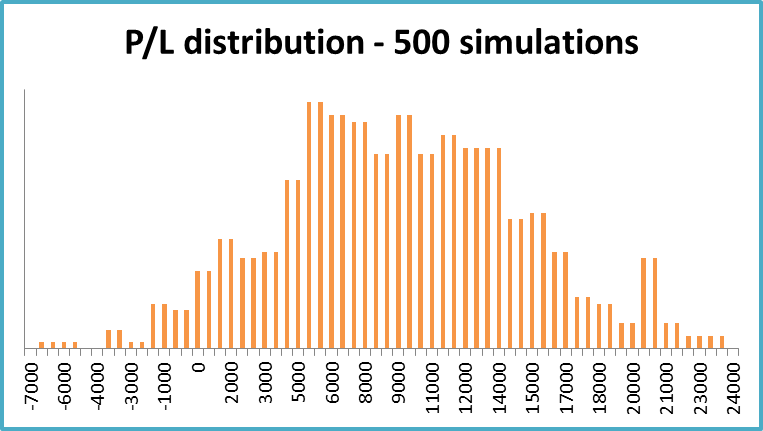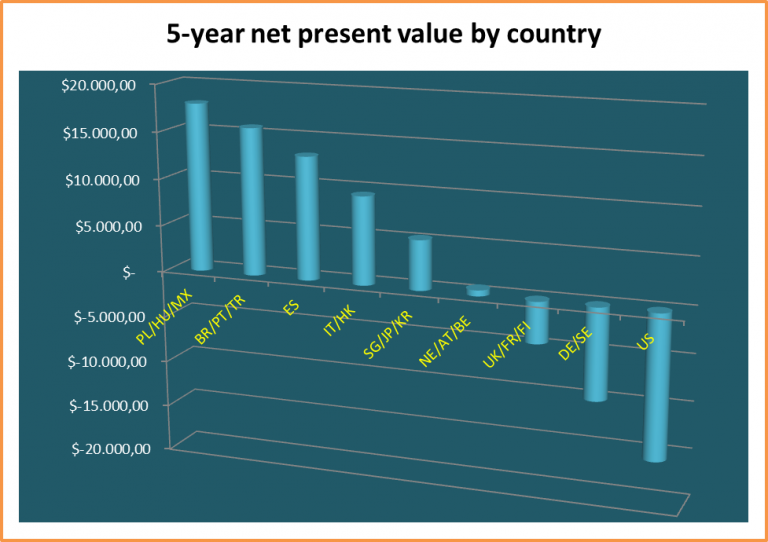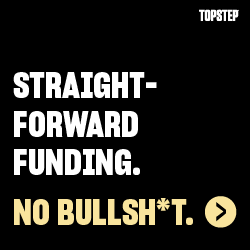
“How much money can I make day trading stocks or futures?” and “What are the odds of making consistent money?” are frequently asked questions among new and struggling experienced traders, but they only represent one side of the same coin when it comes down to evaluating the viability of trading as a business. Unfortunately, countless youtube videos with pretenders “making” thousands of dollars trading out of their rented luxury cars portray an image of professional day trading that is not really helpful when trying to objectively assess trading as a business opportunity from a risk versus reward perspective.
Of course, “expert” critics claim that day trading is for suckers, which is certainly true for the majority of traders out there. However, this is also due to misleading and harmful trading education feeding on the greed and naivety of newcomers. In general, failure rates for small businesses are high across all industries — this also includes hedge funds by the way — if you don’t know what you’re doing. Why should this be different for an independent trader?
But before we delve into the analysis part, let’s briefly define what day trading is and what it isn’t for our purposes.
What’s the opportunity in approaching day trading as a business?
First of all, day trading is not investing. If you’re basing your trading decisions on the fundamental analysis of the “true” fair value of a stock or commodity, then this is not for you.
Your job as a day trader is to take advantage of market friction. Lack of liquidity — where market participants cannot or are unwilling to absorb an incoming large buy/sell order at the current price and will only do so at subsequently higher/lower prices — is such a source of market friction. In a simplified way, the two positions to take here would be to
-
trade in the direction of the liquidity “shock” assuming that there is more to come from the same source or
-
apply a mean reversion strategy assuming that this is an isolated, random event in a resilient market.
So if you believe that it is possible to identify situations where institutional traders are forced to thread their large orders through the proverbial eye of the needle, then day trading will provide many opportunities for you. Understanding the mechanics of algorithmic order execution and how other market participants react to this order flow is the foundation to exploiting these opportunities.
Not to forget, trading gives you a maximum amount of flexibility which allows you to:
- trade part-time and/or markets that are active in “off-work” time zones
- start out with a small account and ramp up trading size over time (it’s a highly scalable business)
- generate an income from anywhere in the world (great for digital nomads)
- optimize income to living expenses ratio and/or tax liability
- increase your overall quality of life (better weather and/or friendlier people!)
Opportunity cost as the main obstacle
One of the probably most ignored cost items is the foregone income when you decide to give professional day trading a shot. For comparison purposes across different countries of the world, the expected first year earnings of business graduates around the world ranges from the highest cost of talent of $79,243 in Switzerland to $52,655 in the U.S. to around $10,000 in Poland or Hungary and even less than that in Russia or Colombia, for example.
Using these figures as a proxy for the general income level in those countries, it is pretty clear that potential traders from Central and Eastern European and developing countries (CEED) have a significant opportunity cost advantage over their counterparts in developed countries.
We will use these numbers in our net present value (NPV) calculation down below to see whether starting a trading business is worth the risk.
Start-up costs are minimal
Trading hardware and equipment
Trading is an attractive work-from-home solution for many people because of its low barriers to entry. The costs for computer equipment and Internet connection, for example, have dropped dramatically and speeds have increased at the same time due to the rapid technological development in the last decade. On the low end, used business grade laptops from Dell or Lenovo already come with multi-monitor support up to 2560×1440 resolution, which is plenty of real estate to stay on top of multiple markets. On the high end, the sky is the limit: the newest generation of hexa-core gaming desktops probably won’t make you a better trader but allow you to unwind post-trading with a top-notch gaming experience.
Trading education or intellectual trading capital
Another significant cost item in this category is arguably education and training. There are plenty of free learning resources provided by the CME Group of exchanges and Eurex Exchange. Since they only cover the basics of the purpose and structure of futures contracts, aspiring traders need to look elsewhere to learn how to treat trading as a business and develop a trading edge.
There is a sheer endless amount of trading educators offering their services to retail traders dreaming of making it big. Unfortunately, most of these educators repeat outdated information based on jargon and terminology from the pit-trading days that are simply not adequate to describe the market ecosystem of electronic and automated trading in a useful way. One such example is the concept of market profile and its associated value areas, which was developed by a CBOT floor trader in the 1980s! It may have worked for some traders in the past, but the futures pits are closed and algorithms increasingly dominate the trading volume.
Modern electronic trading is driven by algorithmic order flow, so a solid understanding of buy-side activity is crucial for any trader competing in the game of trading. CEED.trading’s approach is based on objective research and a thorough analysis of the market microstructure including the different motivations and constraints of institutional traders, high frequency trading firms and all other opportunistic traders.
Capital requirements for day trading
For many prospective traders ‒ especially from lower income countries ‒ sufficient trading capital is the biggest hurdle to overcome. Luckily there are third-parties offering remote prop trading evaluations for a small nominal fee such as Earn2Trade, OneUp Trader or TOPSTEP in the futures arena, FTMO for forex traders, or CEED.funding and TraderEquity for U.S. stocks.
They provide trading capital to traders after passing an evaluation period of simulated trading. To get the most out of these programs, you need to fully understand what you get in return for potentially sharing your profits with them. Check out our CEED.funding page for a more detailed overview and comparison.
If you plan on using your own funds, you need to take into account various criteria to come up with a minimum number.
How much capital do I need for trading futures?
If you intend to use your own funds, there is still the omnipresent question:
“What’s the minimum amount I need to get started?”
If you’re new to trading you should also ask:
“What’s the maximum amount I should start with?”
The short answer is that this should be the same amount initially.
Since every futures contract has a different risk profile based on its minimum tick, intraday volatility, liquidity, etc., we can answer this question from a risk limit or product-specific perspective.
For example, when risking 1% of the account balance on every trade, you would need to develop a strategy and/or pick a product where a reasonable stop loss is set to $100 in a $10,000 account. Without going into too much detail regarding risk management, such a static loss limit would minimize the risk of ruin, i.e. losing all or a set amount of the account balance, as long as the ratio of positive trades over negative trades and the corresponding reward over risk (RoR) results in positive expectancy or positive average profit per trade. However, it doesn’t take into account the product-specific risk profile.
Alternatively, the minimum account size can be determined by the specific contract(s) you intend to trade. To keep it simple, the volatility and size of a particular product is reflected in the exchange maintenance margin. For example, the notional value of one E-mini Nasdaq-100 futures contract is $130,000 ($20 x index value of 6,500) compared to $60,000 for one WTI crude oil contract trading at $60 x 1000 barrels.
When using the exchange maintenance margins as a proxy for minimum account size (to trade one contract) and the associated risk-per-trade levels for the following contracts, you will notice that using a 1%-risk limit may or may not be suitable for your strategy:
| Exchange margin | 1% risk/trade | Tick-equivalent | |
| E-mini Nasdaq 100 | 7,600 USD | 76 USD | 15.2 |
| E-mini S&P 500 | 6,000 USD | 60 USD | 4.8 |
| WTI Crude Oil NYMEX | 4,275 USD | 43 USD | 4.275 |
Adjusting the risk level would be the solution here, but always remember that increasing risk-per-trade also increases the theoretical risk of ruin.
Understanding the difference between intraday margins offered by your broker and exchange margins is key here. Setting your personal margin requirement closer to exchange margins vs. your broker’s day trade margins will certainly enhance your chances to stay in the game long enough to eventually make trading work for you. Low day trading margins are great for hedging existing stock portfolios or trading futures spreads, but continuously maxing out $500 intraday margin in a single trade will most likely destroy your account within a short period of time.
How much capital do I need for trading stocks?
If you are based in the US, you will need at least $25,000 for day trading stocks to avoid the pattern day trader (PDT) rule, which equates to $100,000 in intraday buying power with 4:1 leverage. Alternatively, joining a US-based proprietary trading firm requires passing the Series 57 Exam to get higher levels of leverage on your risk deposit.
Luckily for non-US-based traders, they are not subject to the PDT-rule. There are a handful of EU-regulated brokers that offer direct market access to US stocks at very competitive rates and 10:1 intraday leverage such as the Cyprus-based subsidiary of US broker Just2Trade with a minimum deposit of $3,000.
The major benefit of trading stocks over futures is that it provides more micro trading opportunities within a given index than the macro-based catalysts for index futures. Risk management is also easier due to smaller unit sizes, so it is safer choice to learn trading from the ground up for smaller accounts. Identifying strength and weakness of individual index components also allows for market neutral strategies without being whipsawed by the noise of an index.
Operating costs
Selecting the right broker and keeping commission costs to a minimum is key to reducing the risk of ruin for every account and increasing one’s own profit margin. Don’t go for brokers or futures commission merchants (FCMs) that try to justify the relatively higher cost of their services by providing some elusive value in the form of some kind of hand holding that a professional trader capable of independent thought doesn’t really need. The lowest-cost (as a result of economies of scale = many satisfied customers) provider offering reliable access to your preferred platform and markets should win ‒ period. The rest is just administration of your account.
How can I lower my operating costs?
The ultimate goal for any futures trader with serious ambition, however, should be to eventually seek exchange membership to cut overall cost per contract down even further to an institutional level. As of 01. September 2019, exchange seats were available for lease for as little as $200 in CME’s IOM division, which includes the popular E-mini S&P 500 and E-mini Nasdaq 100 futures contracts. A real no-brainer for traders with higher volume, even if you take into account the $2,000 non-refundable application fee payable to the CME.
Alternatively, energy traders should compare the cost of trading WTI on the NYMEX exchange versus ICE, which ‒ in addition to lower transaction and clearing costs ‒ would also give you the added benefit of being able to trade the Brent crude contract on its primary exchange.
Self-funded equities traders can lower their commission rates by joining brokers that specialize on high-volume traders such as Lightspeed or proprietary trading firms. Non-US graduates of our CEED.accelerator program have access to a discounted group rate through an off-shore proprietary trading firm to get lower rates and access to more buying power after passing CEED.funding‘s Prop Trader Qualifier.
Ongoing costs for Internet, market data subscriptions and software platform fees also fall into this category. Going the professional route through a prop firm has its benefits but you need to remember that the difference between professional and non-professional market data fees is substantial for both futures and equities. In comparison, forex has the lowest ongoing operating costs for data and software as it is free in most cases.
Let’s look at the income side of the equation now.
Monte Carlo simulation of returns
Let’s assume that we don’t have any existing trade data, so we use a Monte Carlo simulation to estimate an income input for the net present value calculation. The sample simulation (see Ill. 2) returned an average profit of $9,359 over 500 repetitions. The average RoR for 1000 trades was 1.27 with a max. risk limit of $100/trade and a dynamic profit target.

| P/L | Post reward/risk | ||
| Average | $ 9,359 | Average | 1.27 |
| StdDev | $ 5,481 | StdDev | 0.06 |
| Max | $ 23,172 | Max | 1.49 |
| Min | $ -6,595 | Min | 1.10 |
This profit figure is based on a set amount of trades, so it depends on how many trade opportunities a trader can identify in a certain time period to come up with specific monthly/annual profit estimates. For the purposes of our calculation, we assume 1000 trades per year with one contract in Year 1, two contracts in Year 2, and so on.
NPV calculations and interpretation
So let’s see which countries are preferable places to start a trading business. These were the inputs for the calculation:
- Initial capital: $10,000
- Required return (discount rate): 50%
- Year 1 profit from trading: $9,359*
- Year 2 profit from trading: $18,718*
- Year 3 profit from trading: $28,077*
- Year 4 profit from trading: $37,436*
- Year 5 profit from trading: $46,795*
- Round-turn commission: $5
*adjusted for opportunity cost by country
Trading as a business full-time: in which countries does it make sense?
The countries in Ill. 3 represent income buckets in approximate $5,000 increments from $10,000 in Poland to $50,000 in the U.S. (compare to Ill. 1).
Positive NPVs indicate that it is worth the risk to invest into a project or business venture ‒ in this case your trading futures business ‒ given our above mentioned assumptions.
On the one hand, the results show high positive NPVs in Poland, Hungary, and Mexico to low positive values in the Netherlands, Austria, and Belgium.

On the other hand, negative NPVs for the UK, Germany, and the U.S. indicate that trading futures may not be the best choice to spend your time from a risk perspective and that you should stick to traditional career alternatives. However, these significant negative NPVs may represent the value that individuals choosing trading over a traditional career put on personal freedom, flexibility of location, and other intangible lifestyle choices.
Nevertheless, the psychological pressure to grow the trading account too quickly and generate enough income to keep up with the Jones’ (i.e. making up the opportunity cost of a traditional job) may be too much to overcome for traders in high-income countries. One solution to mitigate this pressure would be to move to an area or country with a lower cost of living or trade part-time in the beginning stages until the trading income exceeds the foregone income of a secure job.
The paradox that most futures traders are from higher-income countries suggests that either the perceived lack of capital is the highest hurdle to overcome or that trading is viewed as a form of gambling rather than a business in certain cultures. Various funding schemes for remote prop trading opportunities are closing the gap here as the Internet opened the door to recruiting global trading talent and providing the necessary trading capital.
Conclusion
One of the greatest things about trading is that you don’t need a university degree or any sort of formal education to become a trader. Furthermore, technology advancements and omnipresent high-speed Internet access have further broken down the barriers to accessing global stock and futures markets from anywhere in the world.
The opportunity to make a living day trading futures, FX and/or stocks significantly outweighs the associated risk in Southern, Central and Eastern Europe, Central and South America, large parts of Asia, and all of Africa.
Chasing salaries and a career in cities like London, New York, or Moscow is not necessarily the best way to create wealth. Understanding risk and reward is.
The naysayers will insist on saying that day trading for a living is a pipe dream, but taking calculated risks is what the business world is all about. While the early years of every business start-up are difficult, the upside of trading as a business is enormous for the right person with the right mindset, motivation, and guidance.
Learn how to calculate your personal NPV based on your own data and assumptions as part of your trading business plan here.














0 responses on "Trading as a Business ‒ Road to Freedom or Fool's Paradise?"